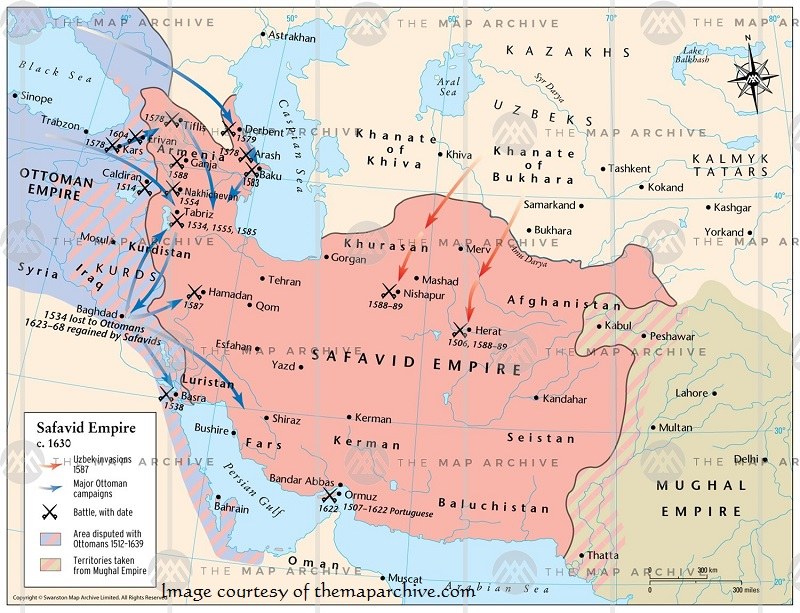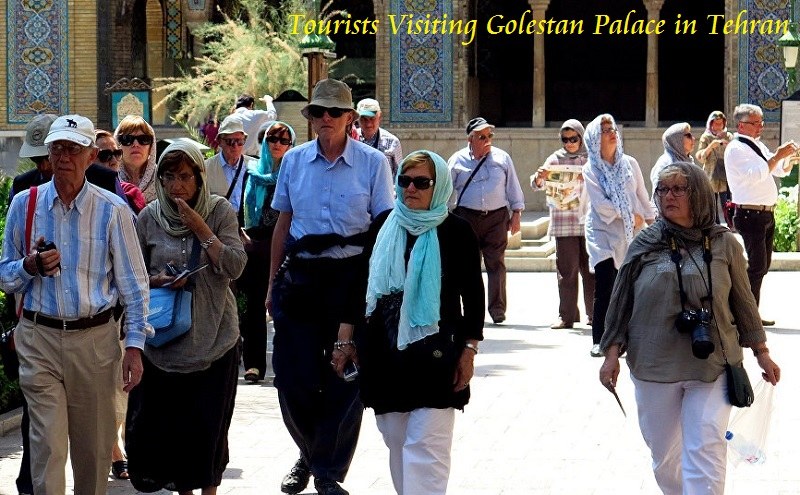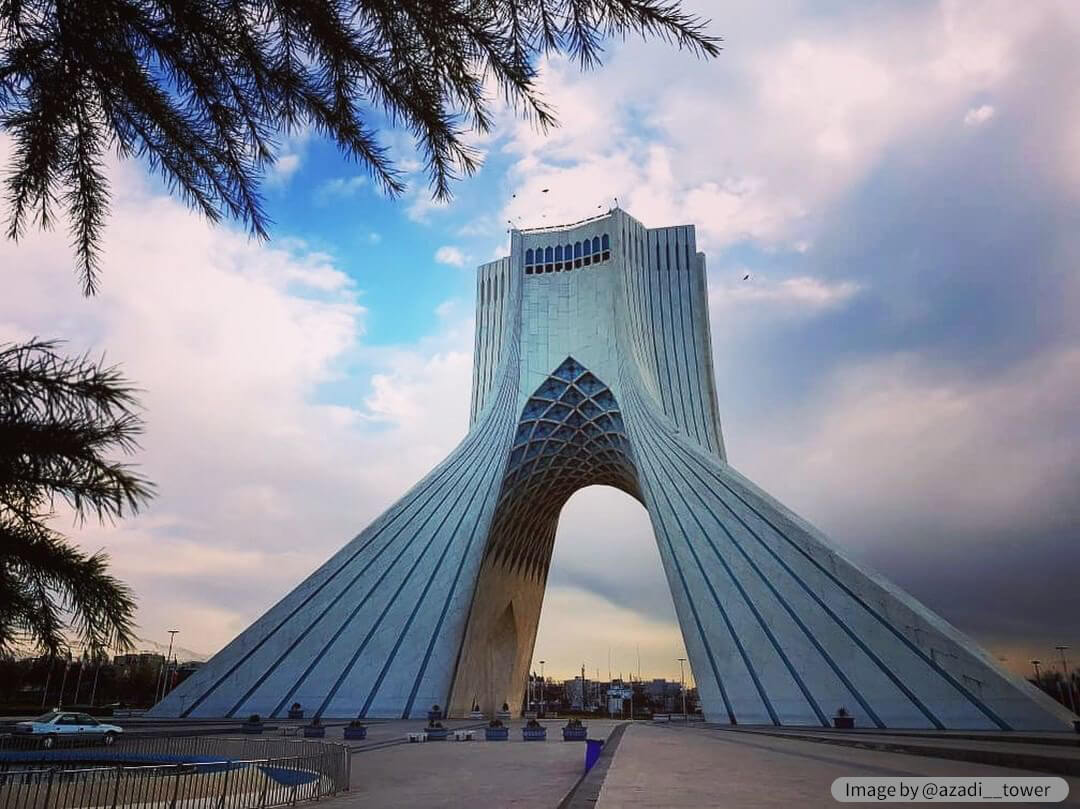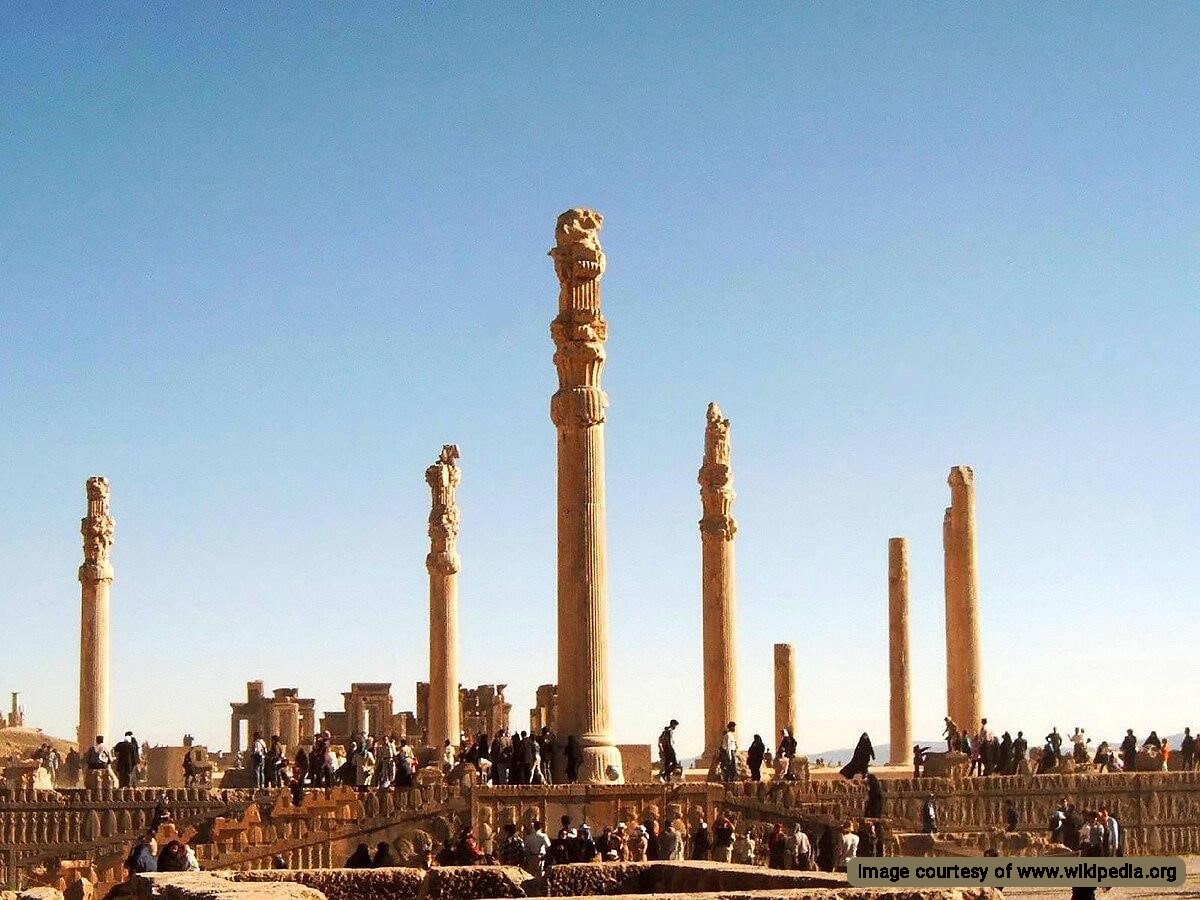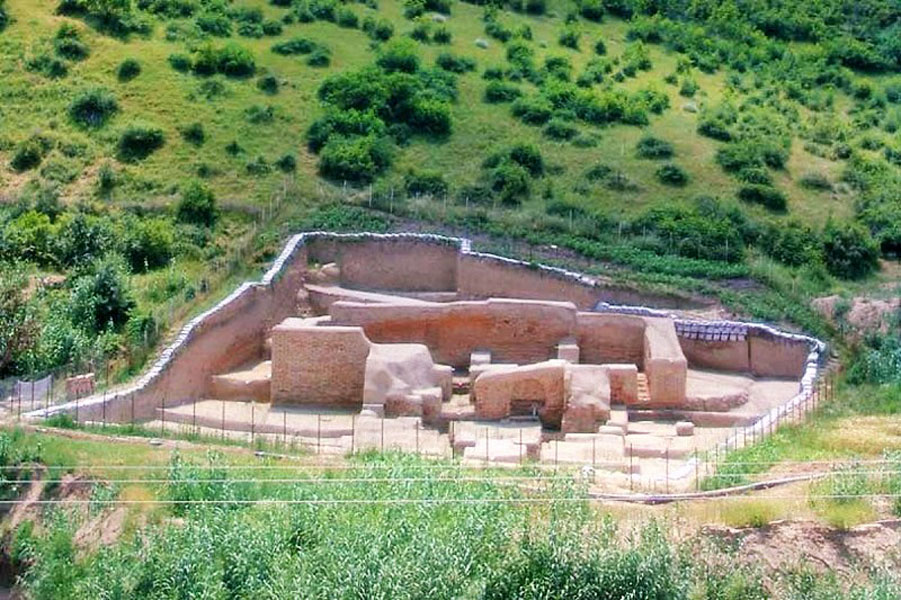To explore the historical-cultural Axis of Fin Sialk Kashan we need to know them individually first. Kashan is a 7000-years-old city with a rich civilization, which has had a deep connection with the civilization of the Sialk mounds from the beginning. The archaeological studies in Sialk mounds of Kashan indicate an extremely valuable civilization and culture in close connection with the city of Kashan.
Archaeologists such as Roman Ghirshman have shown that the first signs of urbanization have emerged simultaneously in Kashan and Sialk. The Sulaymaniyah Fountain in Fin village near Fin Garden and Sialk mounds are the great heritage of the ancient Kashan.
The history of the name of Kashan is interesting. The name of this city was initially “Key Ashiyan” which has changed to Kashan over time. The meaning of this term in Persian is the “House of Kings” and the local people believe that the ancient kings ruled once in this region.
Artistic and Cultural Features of Kashan in the Course of History
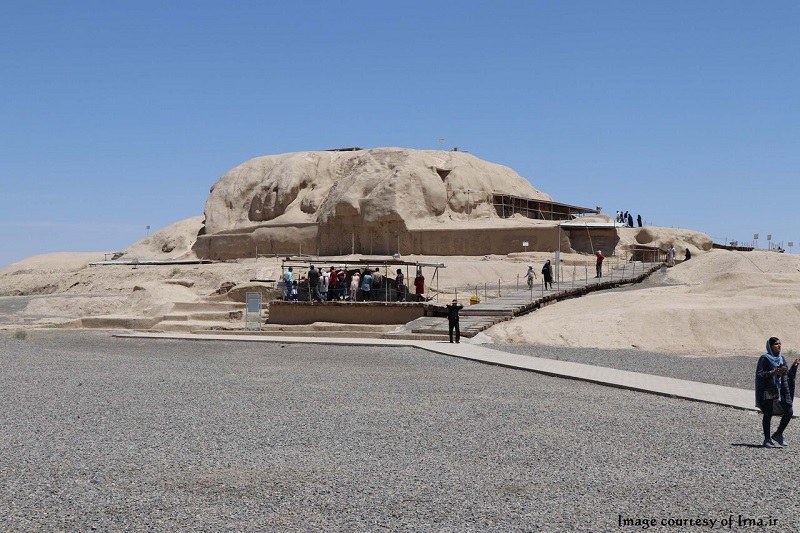
Archaeologists have explored the historical-cultural axis of Fin, Sialk, Kashan and have found interesting facts about the historic mounds of Sialk and their nearby areas. The results of the researches approved the existence of various remains from different historical periods.
Researchers believe that after the advent of Islam, Kashan reached its flourishing conditions in three historical periods:
- The first period dates back to the Seljuk dynasty. By competence and ability of Kashan’s Viziers (political advisors in the past), the culture and art of the city experienced great progress during the reign of Seljuks. For example, some of the viziers introduced the art of calligraphy to the community and promoted poetry. The establishment of scientific and religious schools in Kashan occurred in this period.
- The second period, during the Safavid dynasty, is the era of the prosperity of Kashan in terms of culture and art. Therefore, sociologists consider this period the most brilliant time of cultural development in Kashan.
- Safavid monarchs were very interested in Kashan city. Shah Abbas II was crowned in Kashan. Furthermore, Shah Safi died in this city. Many monarchs chose Kashan for their residence. Certainly, the support of the Safavid monarchs of artists and scientists has been one of the major reasons for the flourishing of art and science in this city.
- The third period of Kashan’s cultural and artistic development dates back to the Qajar dynasty. The traditional architecture was very popular at that time. Skilled architects of the Qajar period made tremendous efforts for the development of Kashan.
Fin Garden of Kashan at Axis of Fin Sialk Kashan
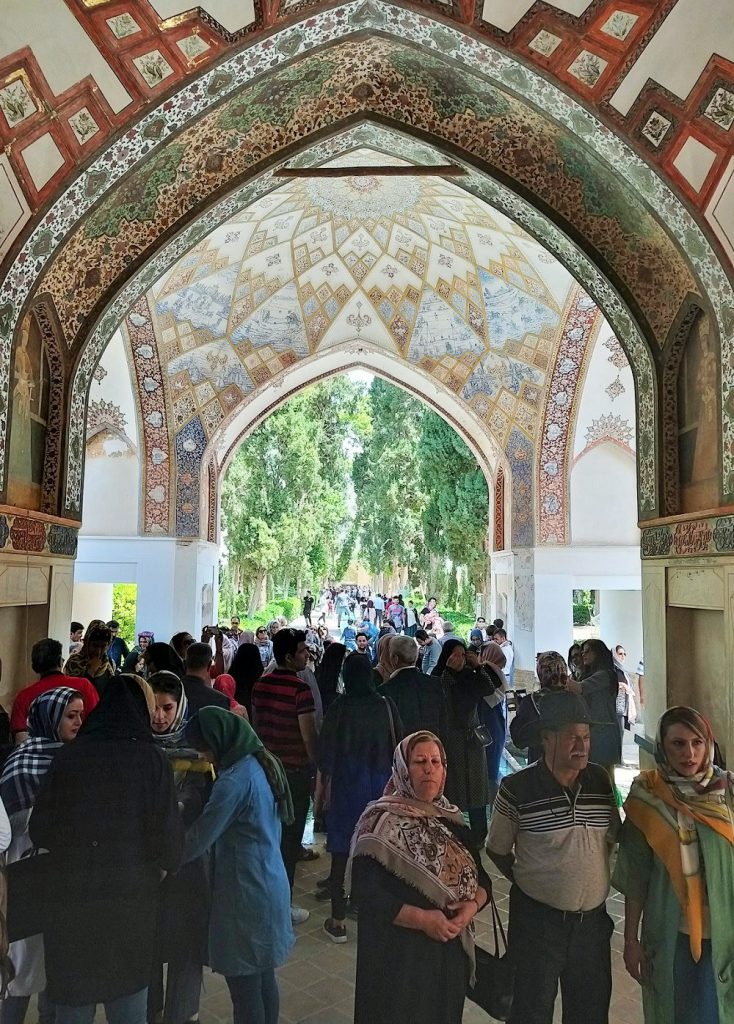
Following the historical-cultural axis of Fin, Sialk, Kashan, we cannot skip the Fin Garden. It is one of the most popular tourist destinations in today’s Kashan, located in the southwest of the city. Historic Fin Garden is located on the southeast side of the Fin Road, adjacent to the historic Sulaymaniyah Fountain. The Fin Garden is a complex of several developments formed throughout history.
Some historians believe that the formation of the Fin Garden dates back to the Buyid dynasty and others estimate that the Garden reached its peak at the beginning of the Safavid era, coincided with the reign of Ismail I.
However, the history of the Fin Garden formation in the city of Kashan dates back to much further. The Fin Garden is the remnant of the Last Glacial Period in Iran. The lake created by lots of rain back then at the site of the garden has gradually dried up.
Since then, in sedimentary fertile soil adjacent to the mountains, the first signs of the residence appeared in the Sialk region. In fact, the main reason for the emergence of civilization around Sialk Historic mounds was the presence of the Fin Fountain (Sulaymaniyah Fountain) near the Garden.
The major factor in the formation of Kashan in terms of history and culture of Fin, Sialk, and Kashan is the presence of abundant and permanent water coming from the Fin Garden. This attracted the attention of the people to the area. As a result, civilization progressed in this historical region.
Sulaymaniyah Fountain at Axis of Fin Sialk Kashan
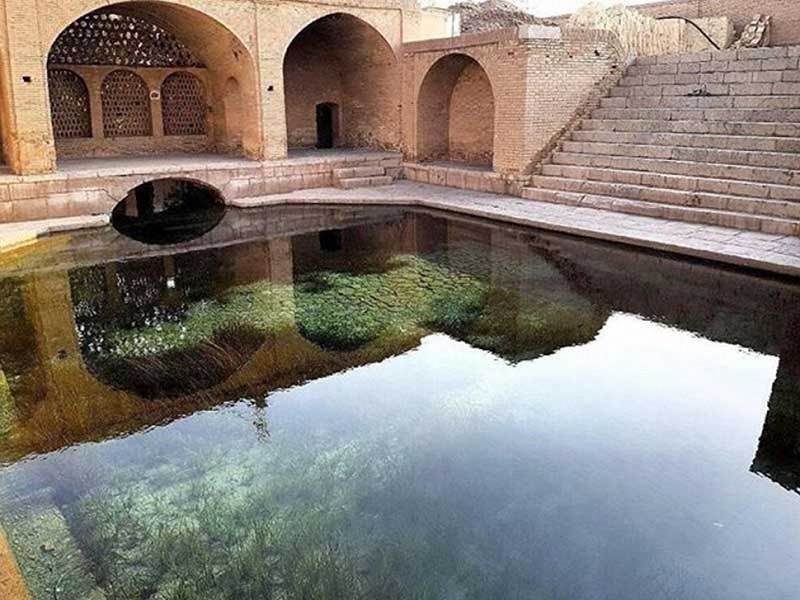
This permanent spring called Sulaymaniyah Fountains has got clear and clean water and is located in the southern side of the Fin Garden of Kashan. However, as the spring water has salts, it is not suitable for drinking. The spring has originated from a compound of indented mountains and the fractures of gypsum and lime mines in the west of Kashan.
The Jews who lived near the Sulaymaniyah Fountain in the Safavid era believed that this fountain was a miracle of Solomon. Therefore, the water of the fountain was sacred for them.
This fountain is not always mentioned in the travel guidebooks, but it’s certainly one of the major spots forming the historical-cultural axis of Fin, Sialk, Kashan.
The Importance of Kashan during the Safavid Era
The formation of Kashan in the historic and cultural region of Fin, Sialk, and Kashan is indebted to several economic and social reasons accompanied by religious ones. The Safavid monarchs had great attention to Shiite beliefs and scholars and Kashan was a city with a large concentration of such scholars right after the advent of Islam in Iran.
Many artists of this area have worked in carpet weaving, tiling, silk weaving, and calligraphy. Safavid monarchs respected these artists. The importance of Kashan was also due to the works of these artists throughout history.
The bazaars, mosques, and historic sites of Kashan have made a significant contribution to the historical and cultural development in the region of Fin, Sialk, and Kashan in the course of history.
Qajar Dynasty: Era of Iran’s Growth and Development in Culture and Arts
The Murder of Amir Kabir in the Historic Fin Bathroom of Kashan
Although the era of Naser al-Din Shah, the Qajar king, and the chancellorship of Amir Kabir led to the culmination of cultural flourishing, the Shah, feeling threatened, issued his murder order. When the modernization of the country started, Amir Kabir, Iran’s Chancellor at that time, became very popular and the Shah felt himself more in danger. So, the Shah ordered the exile of Amir Kabir to the Fin village of Kashan.
Subsequently, as Amir Kabir gained even more popularity day after day, the Shah ordered his murder. The execution of this impudent action happened in the bathhouse of Fin Garden. Therefore, the place is now called the historic Fin Bath.
However, in the late 18th century and after that the city recovered from an intense earthquake, the economy boomed in the city and the export of local goods increased. Following the accumulation of wealth in the hands of a group of new businessmen, there appeared the unique architecture of the houses and historic buildings of Kashan city.
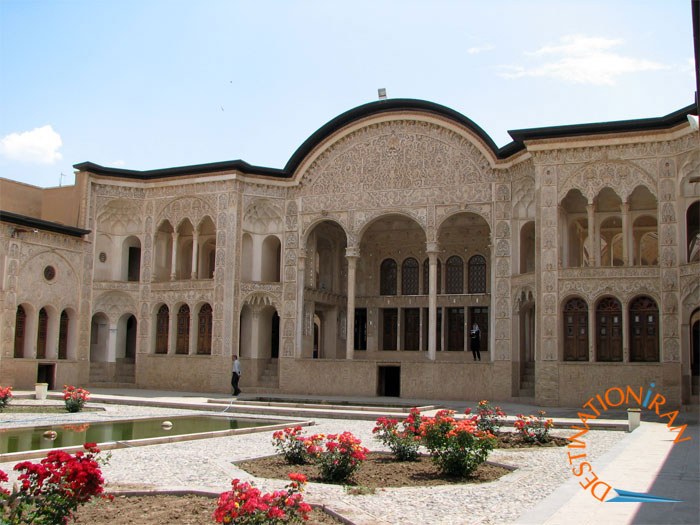
These beautiful monuments transformed the city into an ancient and historic museum for us today. The buildings turned into prominent indicators of the architecture style of the rich people’s houses lived in the course of the economic prosperity of Kashan of the 19th century.
Architects have used beautiful ornaments and diverse attractive architectural styles to build historic and magnificent houses in Kashan. Today, most of these houses are located in one of the old neighborhoods of Kashan. Many tourists visit these spectacular places as well as others in the city every year.
Historical–Cultural Axis of Fin, Sialk, Kashan as a Tourism Destination
Today, the construction of new hotels, as well as the reconstruction of the old houses as travelers’ accommodations, attract many tourists to the city every year. The long history of Kashan and its rich culture has left a lot of tangible and intangible cultural heritage to experience here. Travelers’ visit of Kashan attractions covers an extensive area including the historical-cultural axis of Fin Sialk Kashan.






